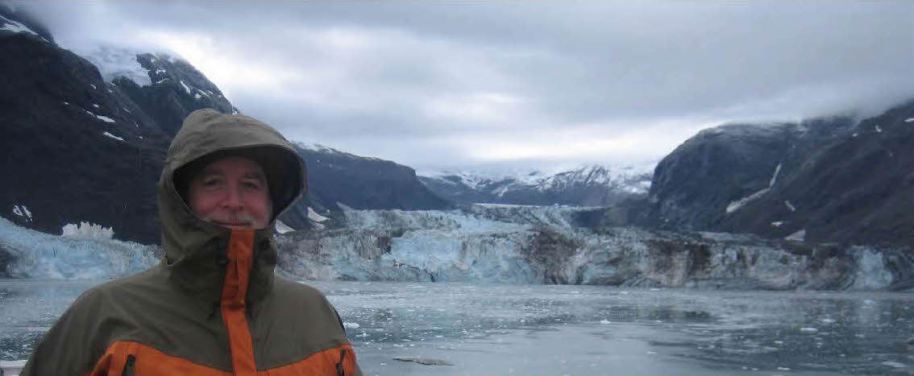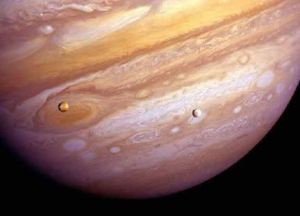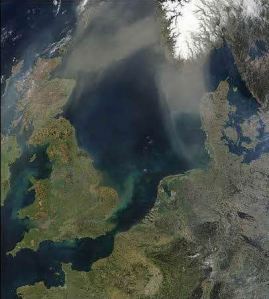Principal Collaborators
The Ecospheres project is a trans-Atlantic research collaboration co-ordinated by Dr. Martin J. Heath (UK) and Dr. Laurance R. Doyle (USA), with invited participants. This collaboration emerged from the First International Conference on Circumstellar Habitable Zones, staged by Doyle at NASA Ames in 1994.
BACKGROUNDS
Dr. Laurance Doyle, SETI Institute
Laurance Doyle (seen above at the John Hopkins Glacier, Alaska) studied astronomy at San Diego State University, and received a doctorate, concerned with the phenomena of light scattering in the rings of Saturn, from the Ruptrecht Karl University of Heidelberg.
Since 1987, he has worked with the SETI Institute as a Principal Investigator. His interests have included applying information theory to animal communications and to chemical communication between the plant and animal kingdoms. He has conducted field work, studying whale songs in Glacier Bay, Alaska. More recently, Doyle has been a participating scientist on NASA’s planet-hunting Kepler mission, and he led the team which discovered the circum-binary planet Kepler 16b. Together with Martin Heath, he has argued that this giant planet was the first confirmed Kepler object to be of potential interest to astrobiologists, because it could, in principal possess habitable moons.
Doyle was privileged to work as part of the NASA imaging team for the historic Voyager missions to the giant planets. He worked on the iconic image left, which shows Jupiter with two of the famous moons discovered by Galileo in 1610. Volcanic Io lies in front of Jupiter’s Great Red Spot, an anticyclonic feature which some astronomers believe to be at least three centuries old). To the right is Europa, a lighter-coloured icy moon which possesses a sub-surface ocean of liquid water.
Dr Martin Heath, Earth Scientist
Martin Heath built up a broad background in the natural sciences at King’s College London. He then spent time at University College London, studying geological and planetary topics, before undertaking a University of London doctorate concerned with the Quaternary and late Tertiary tectonics of South East England. This study did not confirm a simple and widely-accepted model in Britain was simply tilting, with a rise in the NW and subsidence in the SE. After investigating data from levelling, tide gauges, and earth tremors, together with ancient sea level indicators, he concluded that future research must explore more complex models.
Heath entered the field of planetary geology with studies of tectonic deformation on Io (above), which, being subject to intense tidal heating, is the most volcanically active body in the Solar System. Together with Doyle, he has taken an interest in the implications of the ocean inferred to lie beneath the icy surface of Europa and how possible life might be detected. Icy moons and planets with significant geothermal heat at depth are amongst options of interest to astrobiologists as they look beyond the Solar System for habitable worlds.
 Martin Heath: “Take a look at the rolling countryside of southern England’s Weald, (below). It’s not as visually dramatic as a mountain range, but it’s geological history is no less important to the understanding of how life has evolved on Earth. I hope that my study of recent crustal deformation offered useful clues about how a relatively stable, low-relief intra-continental domain remains above sea level, providing land for colonisation by forests and other terrestrial ecosystems. The greater part of our planet’s land surface is no more than tens or hundreds of metres above sea level, and the greatest forest biomes, the most massive and the most diverse, occupy such landscapes. There has been much speculation about how the Earth’s geodynamic style has changed over geological time, as its interior has cooled – about how the geothermal status of a planet might influence geological processes. The discussion is fraught with unknowns. It is, however, of key importance for studies which seek to assess the habitability of other planetary bodies for ecosystems with Earth-type complex life.”
Martin Heath: “Take a look at the rolling countryside of southern England’s Weald, (below). It’s not as visually dramatic as a mountain range, but it’s geological history is no less important to the understanding of how life has evolved on Earth. I hope that my study of recent crustal deformation offered useful clues about how a relatively stable, low-relief intra-continental domain remains above sea level, providing land for colonisation by forests and other terrestrial ecosystems. The greater part of our planet’s land surface is no more than tens or hundreds of metres above sea level, and the greatest forest biomes, the most massive and the most diverse, occupy such landscapes. There has been much speculation about how the Earth’s geodynamic style has changed over geological time, as its interior has cooled – about how the geothermal status of a planet might influence geological processes. The discussion is fraught with unknowns. It is, however, of key importance for studies which seek to assess the habitability of other planetary bodies for ecosystems with Earth-type complex life.”





